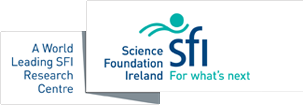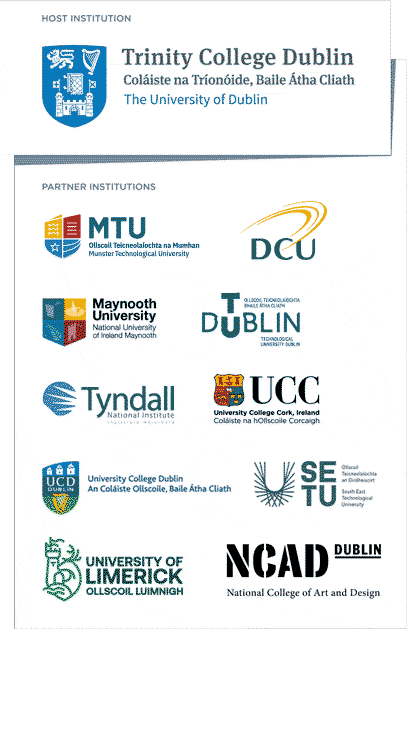
Dr Diarmuid Collins, CONNECT Research Fellow and Iris testbed manager, discusses his work on the Iris testbed at Trinity College Dublin.
So, tell us about the Iris Testbed.
The Iris testbed is a state of the art reconfigurable software radio testbed at Trinity College Dublin, which provides virtualized radio hardware, software virtualisation, Cloud-RAN, Network Functions Virtualisation (NFV), and Software Defined Networking (SDN) technologies and capabilities to support the experimental investigation of the interplay between future networks and new radio.
Iris has been in existence in some form since around 2006, acting as an important platform supporting advanced wireless research in European Research Framework programmes including FP7(2007-2013), Horizon 2020 (2014 to 2020), and Horizon Europe (2021-2027).
What do you enjoy about working on the testbed?
My underlying motivation is to bring about change that betters humanity in some way. It also helps that the variety in my work is enormous. I get great satisfaction from being one of the first people to achieve something, either in the radio, cloud, or IoT space. I also love helping others achieve their goals and objectives, especially groups working on the development and evolution of the Internet into an Internet of Humans i.e., the Next Generation Internet. This can involve helping a student, academic, or industry partner with implementing or executing an experiment that might not normally get completed. Additionally I get to help natural scientists, and public and private bodies towards solving environmental problems and the climate crisis.
What challenges are involved in maintaining the testbed?
The testbed is a complex mixture of state of the art software radio and cloud technologies, which are constantly evolving and updating. Additionally as the testbed is merged with the new OpenIreland testbed, it will integrate with optical and outdoor 5G and 6G radio access technologies and equipment. Experimentation with radio equipment can be quite challenging and difficult. Additionally the testbed needs protection from malevolent external sources such as hackers, so we are always on our guard.
What has been its impact?
Iris has been involved in over 10 EU FP7, Horizon 2020, Next Generation Internet, and SFI projects related to advanced experimentation and research in areas such as radio (CREW, ORCA, WishFul, eWINE, FUTEBOL), artificial intelligence (SATORI), software defined networking and optical communication (FUTEBOL), cloud (Fed4FIRE+, Fed4FIRE, and 5GINFIRE), and remote experimentation and education (FORGE).
Iris has also acted as patron to more than 20 EU- funded open call projects from academic and SME partners across Europe supporting experiment driven research and development. These open call projects have been funded collectively to in excess of €2.5 million.
Typically we have around 15 active student, academic, and industry experimenters per week using the testbed. We have had over 100 experimenters in the last five years.
Do you have any message for industry partners interested in learning more?
There is a lot of EU funding available to support research and experimentation for SMEs and industry at large. Examples include the Fed4FIRE+ and the Next Generation Internet Initiative. As part of the Fed4FIRE+ project, the Iris testbed and facilities from other EU Fed4FIRE+ partners including IMEC, GRID5000, PlanetLab Europe, NITOS, etc., are also open, for free to the SME and industry experimenters until the end of the project (currently projected to be mid-2022). Parties interested in performing experiments on the Fed4FIRE+ facilities can contact the Fed4FIRE+ project or the Iris testbed directly at any time to explore further opportunities. Come talk to us about supporting your ideas.
And have you any message for academics who might like to collaborate?
Academics and students are also encouraged to utilise the Iris testbed and/or Fed4FIRE+ testbed facilities as they provide an excellent opportunity to test, prove and promote their projects and solutions. Firstly, you get access to state of the art equipment and resources at no cost. Second, there are many tutorials available to support advanced research experimentation. Third, experimenters get an opportunity to trail and test the scalability of their theories and code. Finally, you can get access to domain expertise which can help guide your research and ideas to fruition.
And what about you: what’s your background?
I am a software and support engineer with a PhD in Computer Science. I have worked at the Iris testbed for the last 5 and a half years supporting advanced research in wireless and wired experimentation. I have also been the lead engineer on the Pervasive Nation IoT testbed for the last two years. Previous to starting my PhD I worked in industry for 12 years.
What is the future for the testbed?
The testbed has an exciting future. I’m working with Professor Marco Ruffini towards extending Iris into the Open Ireland Testbed, which is a hybrid state of the art optical-cloud-radio testbed with high speed interconnections to testbeds distributed all over the world. In addition, we have plans to integrate quantum communications capacity into the testbed.
Iris is whatever you can imagine it should be: it is constantly evolving and adapting to the needs of experimenters. Come and help us build the future Internet!
CONNECT is the world leading Science Foundation Ireland Research Centre for Future Networks and Communications. CONNECT is funded under the Science Foundation Ireland Research Centres Programme and is co-funded under the European Regional Development Fund. We engage with over 35 companies including large multinationals, SMEs and start-ups. CONNECT brings together world-class expertise from ten Irish academic institutes to create a one-stop-shop for telecommunications research, development and innovation.
Homepage FeatureIn Focus


